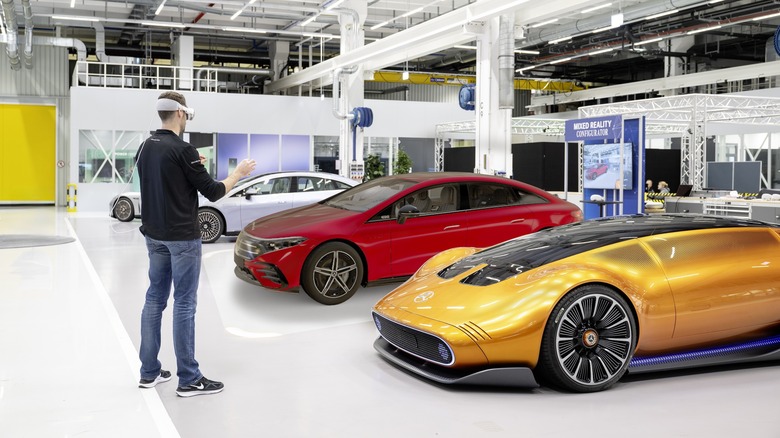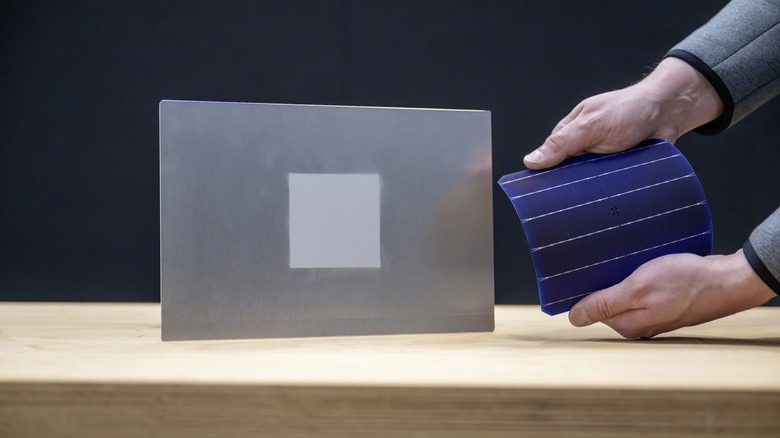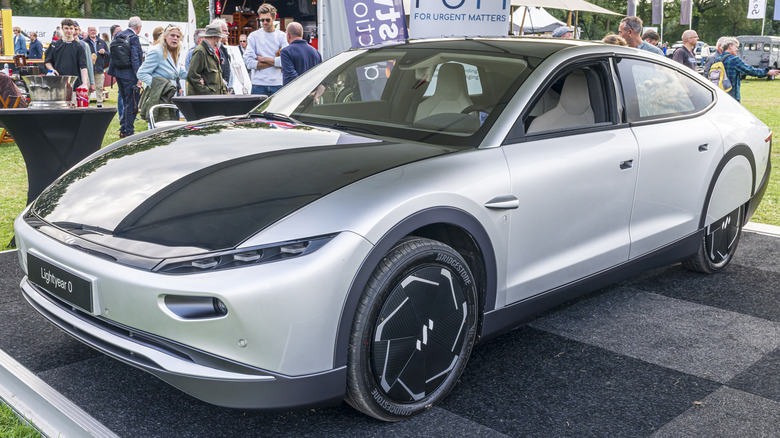Mercedes' New Solar Paint Could Mean Free Charging For EVs
Thanks to their ever-increasing battery capacity, improvements to overall range, and the proliferation of charging infrastructure across the globe, the chances of one getting stranded in an electric car are decreasing every single day. Despite these advancements, however, there is no denying that range anxiety remains an issue among EV users. German luxury carmaker Mercedes-Benz, seemingly, is working on a new technology that will not only increase the range of future battery-electric cars but will also further reduce the ever-pervasive range anxiety problem.
The company's way around this problem, however, is a bit different. Instead of relying simply on larger, higher capacity, and more efficient batteries, Mercedes-Benz's Research and Development team is working on a new type of solar module that could integrate into the body of future cars, turning them, effectively, into a solar panel on four wheels. It is not like this idea hasn't already been tried, as some, might, remember the axed Lightyear 0, solar car.
What makes these "in development" solar panels different from the current crop of photovoltaic cells is their extremely thin nature. Besides making them significantly less bulky than today's solar panels, these panels are thin enough to be integrated into the outer paint coating of the car, thereby earning them the name "solar paint."
Mercedes' solar paint: thinner than a strand of human hair
Under normal circumstances, the first point of discussion when talking about solar panels is their capacity, efficiency, and cost. In the case of the Mercedes Solar paint, the discussion first addresses the sheer thinness of the material. At just 5 micrometers, these panels make the average human hair seem like a log of wood. This sheer thinness also makes the material extremely lightweight — with an estimated weight of just 50 grams for every square meter. Additionally, Mercedes also claims that the "under-development" solar paint will be designed to be affixed on all kinds of substrates, making them flexible enough to be used on future electric vehicles.
Perhaps the most striking fact about solar paint is the mere addition of this feature on future EVs will ensure that they could juice themselves up without the help of a charger. All these solar paint-toting cars need to do is simply remain outside in the parking lot while the car replenishes the battery using power from the Sun.
Mercedes claims that these in-development solar cells will be designed to showcase a high-efficiency figure of 20%, which on a vehicle covering 118.4 square feet of space — the size of a modern-day mid-size SUV — could produce enough electricity to eke an additional 7,456 miles from the car without ever having to charge it. It is pertinent to note that despite being coated with solar paint, the primary means of charging future EVs will continue to be via electric chargers. Solar paint — at least the ones in development currently — is simply not powerful enough to juice up cars from 0 to 100%.
You're not getting this anytime soon
If you are all gung-ho about the prospect of getting to test a Mercedes vehicle clad in solar paint, well, here's the all-important catch. In fact, this is not even a catch, given that we had already indicated that Mercedes' Research and Development team is still actively working on this project. This, unfortunately, also means that cars clad in solar paint are still science fiction stuff and are several years away from becoming reality.
Nevertheless, given Mercedes-Benz's long and eventful history as one of the world's oldest surviving car brands, the company has a strong focus on innovation and research and development. In fact, the company can be attributed to kickstarting the modern-day automobile industry with its first-ever car, introduced in 1886.
Since then, Mercedes has made several contributions to the world of automobiles, including innovations like supercharged engines, four-wheel independent suspension, the crumple zone, anti-lock braking system, electronic stability program, and the now common smart key. With such a long, verified, and established history of research and development and successful products coming out of such research, there is a realistic possibility of Mercedes-Benz' solar paint eventually becoming commonplace on electric cars of the future.


